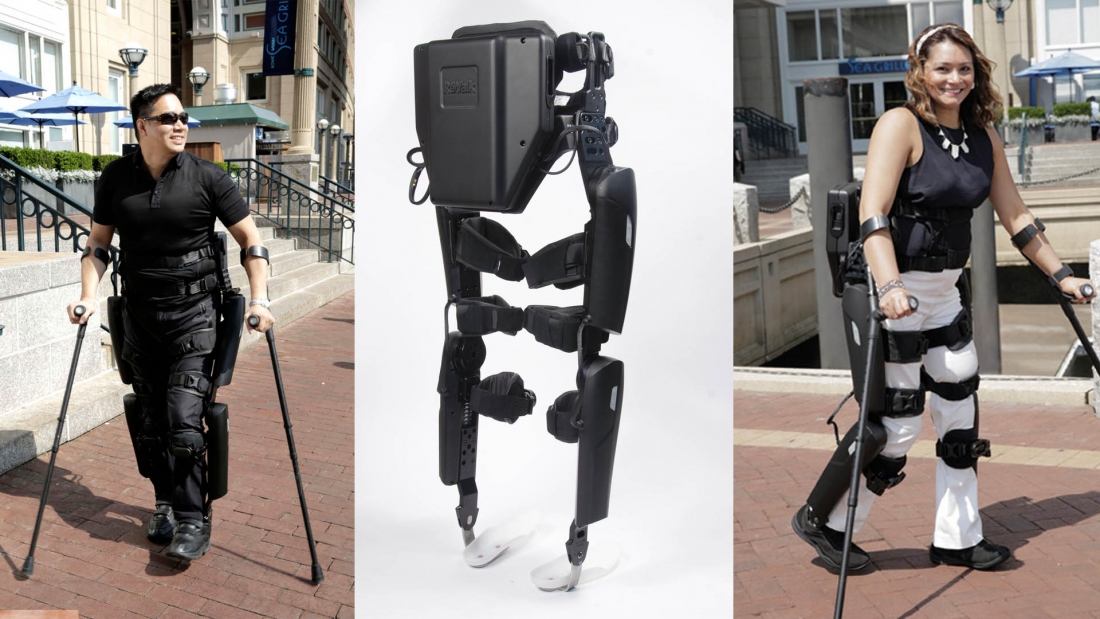A few months ago we took a look at ReWalk’s latest generation of exoskeleton, the Personal 6.0. The life changing all-in-one device reduced motor size, integrated a battery, and improved gait motion and speed. As amazing as the ReWalk device is, the people behind SuitX, a startup in the exoskeleton market, believe there is a lot of room for improvement. The number 1 issue they see is the lack of exoskeletons designed for children. Kids with certain neurological conditions are just as in need of the devices as adults, and perhaps even more so; according to SuitX, children have a very small window of time to train their muscles for the motion of walking. Learning to walk and stand is the best training for locomotion and allows children to avoid secondary injuries associated with sitting. Current exoskeletons are too big and too heavy for children. SuitX’s Phoenix exoskeleton is unique because it is modular, only requiring small motors attached to standard orthopedics. This results in a much lighter and more manageable device – weighing in at 27 pounds compared to ReWalk’s 50 pounds. It is also cheaper – costing $40,000 instead of $70,000.
The second major issue SuitX plans to tackle is practicality. The company’s goal is to make the devices as universally used as wheel chairs. One of the steps to accomplish that is adjusting pricing; SuitX foresees that they will be able to continue to reduce pricing over time until it is inline with motorized wheelchairs. But price is only part of the issue, convenience is also a major factor influencing the use of exoskeletons. If you want wear one to walk somewhere and it takes 10 minutes to put on the device, chances are the user will default back to using the motorized wheelchair. With its smaller, lighter, modular system, SuitX believes that they are on the path to solving this problem.
Specs wise, the Phoenix is controlled wirelessly from buttons integrated into the crutch. It is capable of speeds of 1.1 MPH. While this is slightly slower than competing products (ReWalk Personal 6.0 maxes out at a speed of 1.6 MPH), the compromise comes from reduced weight and smaller motors. The battery for the Phoenix is worn like a backpack and can power the wearable walker for 8 hours, which is fairly standard.
SuitX’s Phoenix exoskeleton is an important new entry in the category. Any improvements to usability and accessibility of exoskeletons in meaningful. Being able to offer children use of these wearable machines is so important. Besides offering muscle training, it provides hope and sense of normalcy; it allows them to feel like less of a burden in social settings. Interestingly, as useful as the exoskeletons are for walking, they are even more vital for standing and stretch one’s body. SuitX spoke a user who wished they had access to an exoskeleton earlier in life because it would have reduced tightness and allowed their body and muscles to remain looser, possibly reducing the number and frequency of spasms. Another user said that before he had access to the exoskeleton, he was training to kill the nerves in his hands so that he could stand longer with crutches. While these wearable machines are life changing, most of them are still restricted to use in specialized facilities. Thankfully that is starting to change as exoskeletons become more mature but more development, research, and testing needs to happen before people can own an exoskeleton for personal use.



